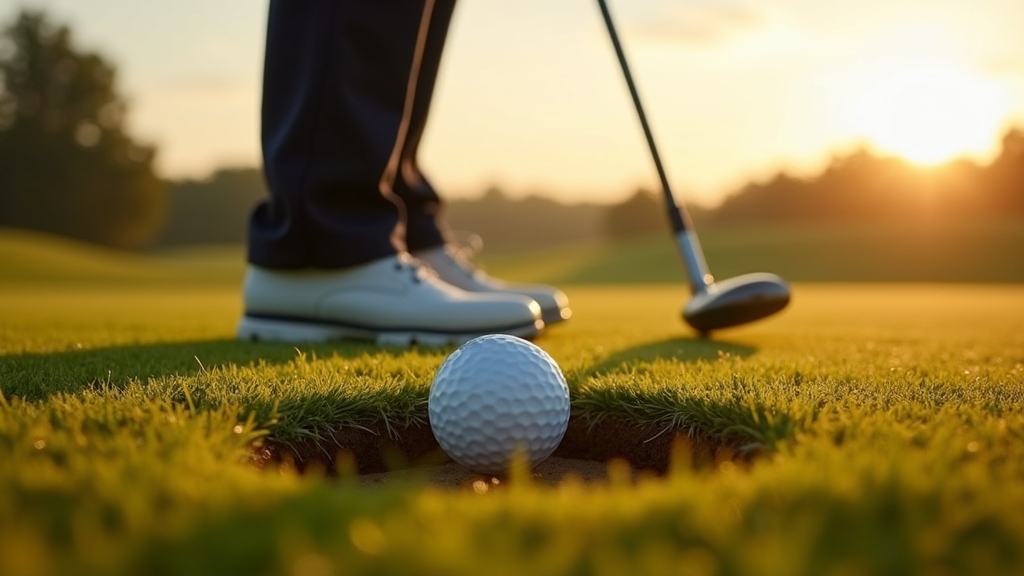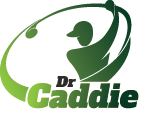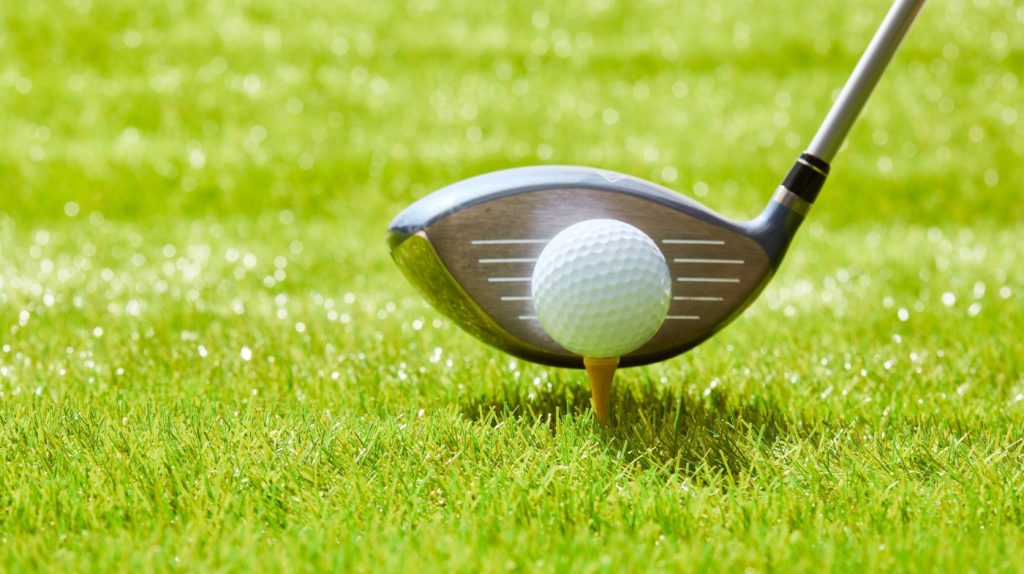To hit your 3 wood consistently, set up with a slightly wider stance than irons and position the ball just inside your lead heel. Keep your weight balanced with a slight forward lean and maintain a smooth rhythm throughout your backswing and downswing.
Focus on striking the ball just before the low point of your swing arc for clean contact. Adjust your setup based on lie conditions to control trajectory. Mastering these fundamentals will boost your confidence and accuracy with the 3 wood.
- Key Takeaways
- Optimal Setup and Stance for 3 Wood
- Choosing the Right Fairway Wood Loft
- Mastering the 3 Wood Backswing
- Executing the Downswing and Follow-Through
- Achieving Consistent Ball Contact
- Common Mistakes When Hitting 3 Wood
- Effective Drills to Improve Your 3 Wood
- Adjusting for Different Lie Conditions
- Building Confidence and Mental Focus With 3 Wood
- Frequently Asked Questions
- Avoid Common Mistakes and Gain Confidence with Every Shot
Key Takeaways
- Position the ball about one ball inside your lead heel with a slightly wider stance for consistent, sweeping contact with the 3 wood.
- Use a smooth, controlled swing with weight shifting from the back foot to the front, keeping the clubface square at impact.
- Adjust your ball position and stance width based on lie conditions—forward and wider for soft lies, back and narrower for tight lies.
- Maintain a balanced posture with spine tilted slightly away from the target and keep your head steady throughout the swing.
- Practice visualization, tempo drills, and impact-focused exercises to develop confidence and ensure consistent 3 wood shots every time.
Optimal Setup and Stance for 3 Wood
When setting up for a 3 wood, make sure your stance is wider than for irons but narrower than for a driver, with your feet shoulder-width apart or slightly wider. Align the inside of your ankles with the outside of your shoulders to provide stability for the club’s long shaft.
Position the ball about a half-ball inside your lead heel, not as far forward as with a driver, to avoid topping. Keep your weight evenly distributed, with a subtle forward press toward your lead leg.
Set the clubface square or slightly open, and align your body parallel-left to the target line if you’re right-handed. Maintain a slight knee flex, a tall posture with your spine tilting slightly away from the target, and a firm but relaxed grip for control.
Choosing the Right Fairway Wood Loft
Although choosing the right loft for your 3 wood might seem straightforward, it plays a crucial role in optimizing your launch conditions and shot performance.
Typically, 3 woods range from 14 to 16.5 degrees loft, with stronger models around 12-13 degrees and weaker ones near 16-17 degrees.
If you swing fast, a lower loft (12-14°) helps produce a lower ball flight and more roll, and selecting the proper clubface control is essential for consistent shot accuracy.
For slower swing speeds, higher lofts (15+°) increase launch angle and carry.
Beginners often benefit from lofts around 17°, improving forgiveness and control.
Proper loft selection also ensures consistent distance gaps between clubs, avoiding overlap. It is important to maintain a loft separation of at least 3+ degrees between fairway woods to achieve effective distance gaps.
Consider your swing speed and skill level carefully to choose a loft that maximizes distance, trajectory, and forgiveness for your game.
Mastering the 3 Wood Backswing
Selecting the right loft sets the stage, but mastering your 3 wood backswing determines how well you’ll deliver power and accuracy.
Start with a slightly wider stance than your irons, placing the ball just forward of center. Position the ball so it lies between the middle ear stones and the lead heel to ensure a slight descending blow, avoiding hitting up or thinning shots proper setup. Keeping the clubface square to the target before gripping can significantly improve your shot accuracy.
Keep your feet, knees, hips, and shoulders aligned parallel to the target line, and maintain balanced weight with a slight spine tilt away from the target.
Grip the club firmly but keep your arms relaxed, forming a triangle at address.
Initiate the backswing with your shoulders, allowing the club to swing on a wide arc while your lead arm stays straight but flexible.
Shift weight smoothly to your trail foot, resist excessive hip rotation, and keep your head steady.
Maintain a smooth tempo, avoiding rushing for consistent, controlled strikes. Developing a smooth rhythm helps prevent tension and promotes a positive swing sequence.
Executing the Downswing and Follow-Through
Since the downswing sets the tone for your shot, focus on controlled clubhead speed and a smooth weight transfer from your back foot to your front foot.
Keep your swing plane slightly flatter than with irons, maintaining a neutral hand position to avoid twisting the clubface.
Initiate an inside-out swing path by adopting a slightly closed stance, helping prevent slices and promoting a draw.
As you approach impact, ensure the clubface is square and your low point hits just ahead of the ball for a slight downward strike.
During the follow-through, fully extend your arms and rotate your body completely while maintaining balance.
Finish in a controlled, balanced position with weight fully shifted onto your front foot to maximize power and consistency.
Just as keeping your grip dry improves control, using a towel to absorb moisture on your golf grips can help maintain a better hold during your swing.
Achieving Consistent Ball Contact

To get that consistent ball contact with your 3 wood, try positioning the ball just inside your lead heel. This little adjustment really helps promote a sweeping swing and can speed up your play, especially when playing with twosomes or foursomes.
When you’re making your shot, focus on hitting the ball right at the low point of your swing arc. It’s all about that sweet timing!
Make sure your clubhead brushes the turf just after you make contact with the ball. This technique is key—it not only helps you maintain control but also maximizes the distance of your shots.
Selecting the right club based on distance and lie ensures you make the most effective shot possible with your 3 wood.
Ideal Ball Position
When you position the ball correctly for your 3 wood, you’ll achieve more consistent contact and better shot quality. Place the ball about one ball inside your lead heel, forward of mid-irons but not as far as your driver setup.
Use your shirt logo as a visual cue for repeatability. This position supports a sweeping swing with a slight downward strike, helping you avoid topping the ball or hitting fat shots.
Keep your weight slightly favoring the lead foot and your stance shoulder-width for balance. Avoid placing the ball too far forward, which causes topping, or too far back, which leads to scooping.
Precise ball position maximizes the 3 wood’s shallower face design and higher center of gravity, promoting clean contact and ideal flight. Incorporating engaging on-course games can also improve your overall golf skills and enjoyment during practice and play.
Impact and Low Point
Although hitting a 3 wood cleanly can be challenging, mastering your impact position and low point is key to consistent ball contact.
Focus on shifting your weight toward your lead leg during the downswing to position the low point just ahead of the ball.
Maintain a shallow swing plane that sweeps the turf without a heavy divot.
Keep your clubface square or slightly closed at impact to avoid slices, and ensure your lead shoulder stays level to prevent topped shots.
Weight shifts forward, low point moves toward target.
Clubhead brushes ground with minimal turf contact.
Clubface aligned square, hands in neutral “V” position.
Lead shoulder steady, spine angle maintained through impact.
Practice these to hit your 3 wood solidly and consistently every time.
For optimal results, make sure your club length and flex are properly fitted by measuring your wrist to floor height.
Common Mistakes When Hitting 3 Wood
Even skilled golfers can struggle with the 3 wood if they overlook common setup and swing errors. You might place the ball incorrectly or use a steep swing path, causing fat or topped shots. Mental lapses like rushing the swing or ignoring lies also reduce consistency. Avoid these pitfalls by focusing on setup, swing plane, and shot selection. It is crucial to only hit fairway woods when in a good lie on the fairway to maximize shot success. Choosing the right grip size can also improve control and consistency with your 3 wood.
| Mistake Category | Common Errors | Consequences |
|---|---|---|
| Setup & Ball Position | Ball too far back/forward, stance | Fat shots, topping |
| Swing Path & Angle | Steep swing, early head lift | Thin strikes, loss of power |
| Lies & Situations | Using 3 wood on bad lies | Poor contact, inconsistency |
| Impact & Contact | High face hits, improper compression | Weak flight, hooks/slices |
| Practice & Mental | Over-focus on distance, no routine | Inconsistent results |
Effective Drills to Improve Your 3 Wood
Since mastering the 3 wood requires consistent contact and proper swing mechanics, incorporating targeted drills is essential. Focus on refining your setup, swing path, impact, and tempo to build confidence and precision.
Try these drills to improve your 3 wood:
Practice ball position slightly forward, just inside your lead heel, with relaxed arms and aligned forearms.
Use weight shift drills to promote a smooth, shallow angle of attack and rhythm.
Hit impact bags or mats to ensure you strike the ball before the turf, keeping your head down.
Use a metronome or count in your head to maintain a relaxed grip and consistent tempo throughout the swing.
Including a dynamic warm-up before practice can increase muscle temperature and improve coordination, leading to more effective drills and better 3 wood performance.
Adjusting for Different Lie Conditions
When you face different lie conditions, adjusting your 3 wood setup and swing becomes essential to maintaining accuracy and distance.
On tight lies, position the ball slightly back in your stance, narrow your stance, and keep your weight centered or slightly back to sweep the ball cleanly. Experimenting with loft adjustments can optimize shot consistency on these lies. Additionally, understanding the terrain suitability helps you choose the right approach for different ground conditions.
For soft or uneven lies, move the ball forward, widen your stance for stability, and shift more weight onto your lead foot to ensure solid contact.
Adjust your club’s lie angle if possible: flatter for tight lies to open the clubface and promote straighter shots, upright for softer lies to close the face and add control.
Loft adjustments also help: use higher lofts to launch from thick rough and lower lofts for roll on firm fairways.
These tweaks optimize turf interaction and shot shape.
Building Confidence and Mental Focus With 3 Wood
Before you take that 3 wood shot, take a moment to visualize what you want. Picture a smooth swing followed by a perfect ball flight that lands exactly where you aim. It really helps to see it in your mind first!
And don’t forget about positive self-talk. Remind yourself that you’ve got this! Believing in your ability will keep you calm, especially when the pressure is on. This little bit of mental prep goes a long way in sharpening your focus and building the confidence you need to hit those shots consistently. Choosing the 3 wood often leads to better accuracy and control, which can boost your confidence even more.
Visualization Techniques
Although many golfers focus primarily on physical technique, mastering visualization techniques can dramatically boost your confidence and mental focus when hitting a 3 wood.
Visualization helps you mentally rehearse both the shot’s outcome and the swing process, building consistency and trust in your ability.
Before each shot, stand behind the ball and vividly picture the ball’s flight, trajectory, and landing spot, incorporating environmental factors like wind and hazards. This mental rehearsal activates the same muscles needed for the swing, effectively preparing your body even before you move. stimulates muscles
Use clear, sensory-rich images to lock in your target and swing feel.
See the ball’s apex, curve, and roll after landing.
Imagine the exact swing mechanics needed for the shot.
Picture the fairway’s contours and obstacles in detail.
Include real-time conditions like wind direction and elevation.
Regular practice of these techniques strengthens mental focus and shot execution.
Positive Self-Talk
Positive self-talk plays a crucial role in building your confidence and sharpening mental focus when using a 3 wood.
By engaging in positive self-talk, you reinforce belief in your ability to execute challenging shots, reducing anxiety and enhancing performance under pressure.
Use affirmations like “smooth swing” or “solid contact” before and during your shot to guide your technique.
Focus your internal dialogue on task-related cues, such as alignment and tempo, to maintain concentration and minimize distractions. Many golfers are unaware of their negative self-talk until it is pointed out, so monitoring self-talk during play can reveal important insights.
After rounds, analyze your self-talk to identify negative patterns and replace them with constructive phrases.
This practice not only boosts your confidence but also fosters consistency, allowing you to perform better with your 3 wood every time you step up to the ball.
Frequently Asked Questions
Can Weather Conditions Affect How I Should Hit My 3 Wood?
Yes, weather conditions definitely affect how you should hit your 3 wood.
Rain and wet turf reduce roll and demand softer landings, so you might need a higher trajectory or a hybrid instead.
Wind influences your shot shape and club choice; use a lower trajectory to combat gusts.
Cold, dense air shortens distance, so swing more aggressively or pick stronger clubs.
Always adjust your technique based on temperature, humidity, and course conditions for best results.
How Does Shaft Flex Impact 3 Wood Performance?
Think of shaft flex as the rhythm that guides your 3 wood’s dance.
If your swing’s fast, a stiffer shaft keeps your shots low and controlled, reducing spin for more roll.
If you swing slower, a softer shaft helps launch the ball higher with more spin, giving you better carry and stopping power.
Matching flex to your swing speed improves energy transfer, consistency, and shot accuracy every time you tee off.
What Golf Balls Work Best With a 3 Wood?
You’ll get the best results with mid to high compression balls that match your swing speed for consistent distance.
Softer, lower compression balls help if you’re a beginner, boosting forgiveness and launch.
Multi-layer balls like Titleist Pro V1 or Srixon Z-Star give advanced players control and feel.
Look for moderate spin and higher launch characteristics to keep your 3 wood shots straight and carry far.
Choose balls tested for fairway woods.
Should I Use a Tee When Hitting a 3 Wood off the Fairway?
Imagine trying to sweep leaves with a broom meant for dusting. Using a tee off the fairway with your 3 wood is similar.
You shouldn’t use a tee when hitting a 3 wood off the turf. Instead, position the ball slightly forward of center and strike downward to guarantee solid contact.
Using a tee can disrupt your swing path and cause inconsistency. Focus on a clean, turf-based shot for better control and distance.
How Often Should I Replace My 3 Wood for Optimal Play?
You should replace your 3 wood every 4 to 6 years to keep up with technology improvements that boost distance and forgiveness.
If you notice reduced performance, inconsistent hits, or shaft damage, consider replacing it sooner.
Regular club fittings help determine the right timing.
Also, if your swing changes or you switch to hybrids or mini drivers, adjust your replacement schedule accordingly to maintain ideal play and bag balance.
Avoid Common Mistakes and Gain Confidence with Every Shot
Hitting your 3 wood correctly every time isn’t magic. It’s about mastering the fundamentals and trusting your swing. Focus on your setup, backswing, and follow-through like a well-oiled machine. Avoid common mistakes, practice targeted drills, and adjust to different lies with confidence.
Remember, consistency comes from patience and repetition. Keep your mental game sharp, and soon your 3 wood shots will fly straight and true, cutting through the course like a knife through butter.

